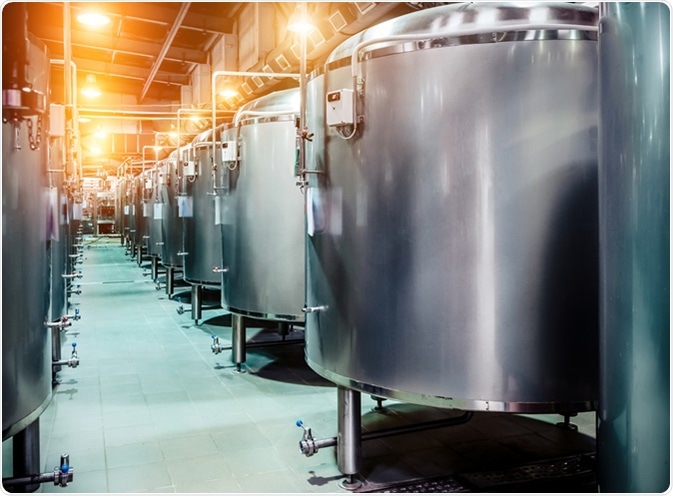What is Biocatalysis?
How do Living Organisms Speed up Chemical Reactions?
Biocatalysis is “the use of natural substances to speed up (catalyze) chemical reactions”. In most cases, a group of proteins called enzymes will be carrying out the catalysis, but a combination of enzymes as well as cells can be used. These enzymes can be taken from the cell, either from the original cell or from a different cell that was modified to produce the enzyme.
Enzymes are involved in life processes, including digestion and getting energy from digested food. Therefore, a lot of chemical reactions catalyzed by enzymes have a biologically-related function. Possibly the oldest example of biocatalysis is brewing, where microorganisms are used to convert sugars into alcohol; historical records date back 6,000 years.

Benefits over Chemical Catalysis
Biocatalysts can also be used to replace chemical catalysts, and this has the advantage that toxic by-products of chemical catalysis are bypassed. This makes it cleaner and removes the need to clean up the toxins.
Another advantage of using enzymes is its specificity and ability to function in mild conditions. Enzymes are larger than traditional chemical catalysts, therefore there are more contact points between the substrate and the enzyme. Being a biological molecule, enzymes are able to function in milder conditions; this means that the substrate and the newly formed molecules do not need to be protected during the reaction. Also, modifications can easily be made to the enzyme via protein engineering, so that it can work with a different substrate.
Application of Biocatalysis in the Pharmaceutical Industry
Despite the advantages that enzymes can bring, their use in the pharmaceutical industry has not been wide-spread. This was mainly down to the fact that it took time to identify and optimize enzymes for reactions. Improvements in access to enzymes and protein engineering have led to the possibility of using enzymes in pharmaceutical industry.
From Whole Cells to Isolated Enzymes
Traditionally, when whole cells were used, it would be extremely time consuming as well as complex to fully optimize. Therefore, this method was only really used at the end of a drug production, if at all. However, once enzymes were stably isolated, it gave the opportunity for the enzyme to be used at any stage of drug preparation.
To expand the repertoire of enzymes available, genome sequences can be used; due to improvements in DNA sequencing, there are now many many genome sequences available to the public. Using the DNA sequence of known enzymes, it is possible to search for sequences which are similar. Once these similar sequences are found, it can then be placed into a different organism and then made to see if the sequence does in fact code for an enzyme.
Protein Engineering
Initially, enzymes were not “engineered” and used in its natural state; once screening had shown that an enzyme yielded the desired reaction, it was used. In the 1980s to 1990s, the structures of enzymes were used to drive the modification of enzymes to be able to use a wider range of substrates, including using non-natural substrates.
Following this, a directed evolution approached was applied; by using selection pressures, the enzymes were forced to change, and by applying different pressures it is possible to try and force the enzyme to change in a desirable way. The problem with this is that it can take time; in one example, it took one year of directed evolution to optimize a transaminase used in drug production.
Considering that the final enzyme can be as much as 10-20% different from the original, this means that there is a huge number of variants that need to be screened. Therefore, new approaches may be needed; Truppo suggests a design-test-make cycle, where computational tools are used to design enzymes which would most likely be optimal, then making and testing these. In this way, the potential function of the modified enzyme can be tested during the design phase and only those that potentially function in a desirable manner need to be made and tested.
Sources
- http://www.bio-catalyst.com/hot-and-new-in-biocatalysis/biocatalysis/
- https://pubs.acs.org/doi/full/10.1021/acsmedchemlett.7b00114
Last Updated: Aug 23, 2018

Written by
Dr. Maho Yokoyama
Dr. Maho Yokoyama is a researcher and science writer. She was awarded her Ph.D. from the University of Bath, UK, following a thesis in the field of Microbiology, where she applied functional genomics toStaphylococcus aureus . During her doctoral studies, Maho collaborated with other academics on several papers and even published some of her own work in peer-reviewed scientific journals. She also presented her work at academic conferences around the world.
Source: Read Full Article
